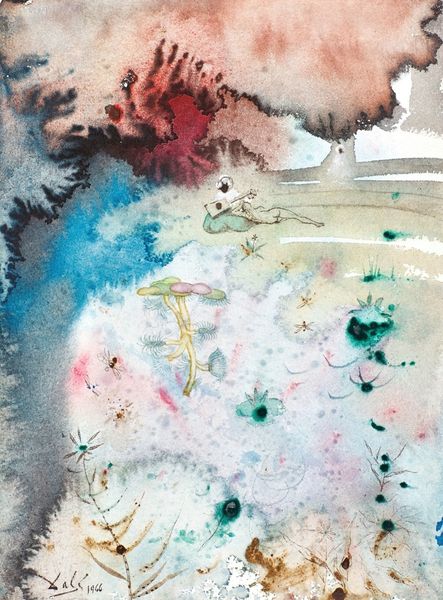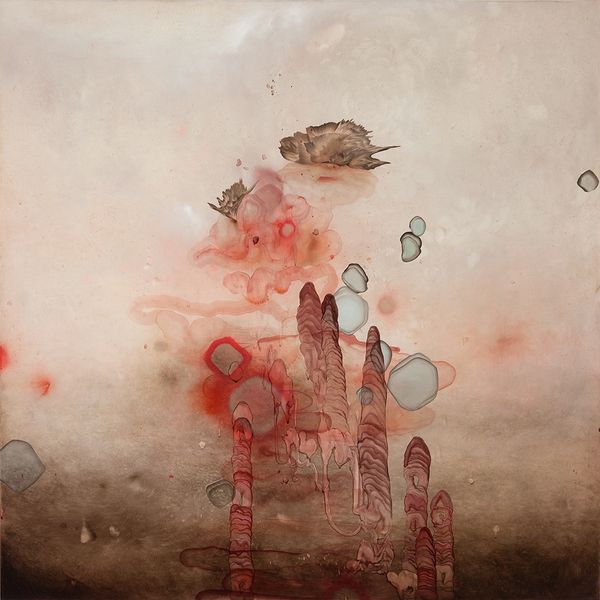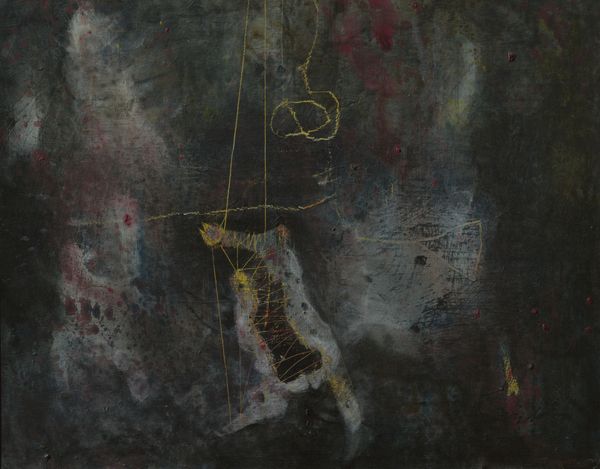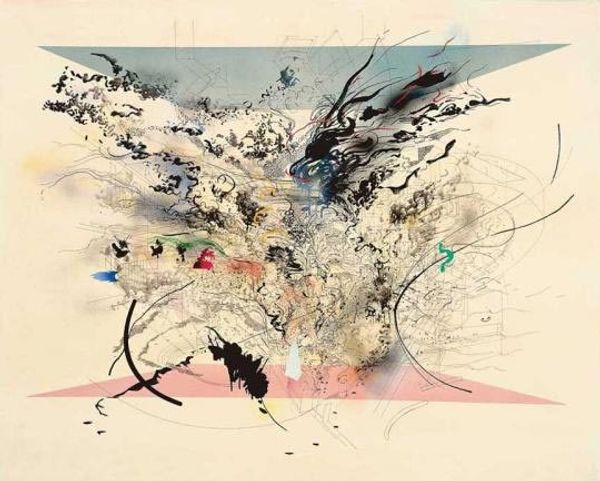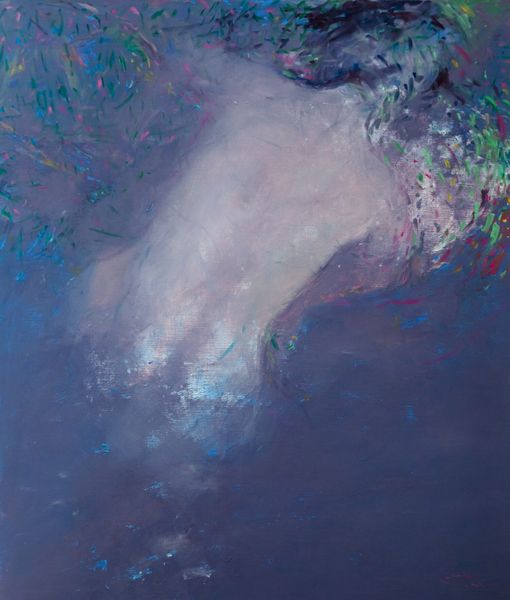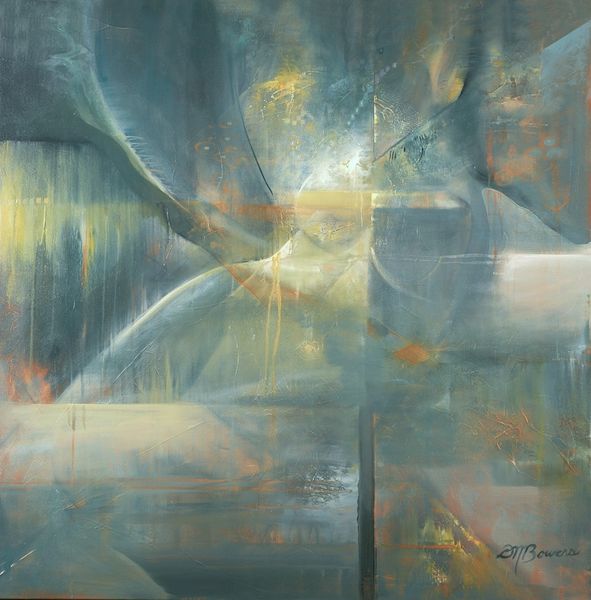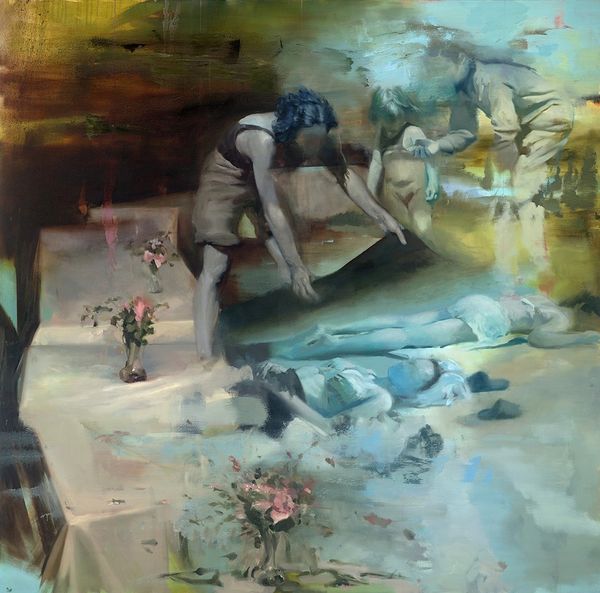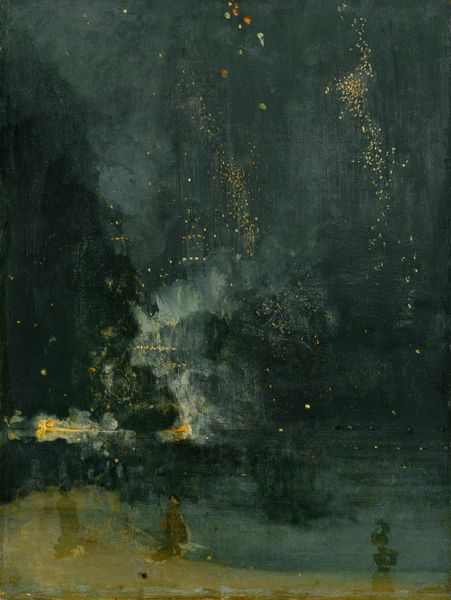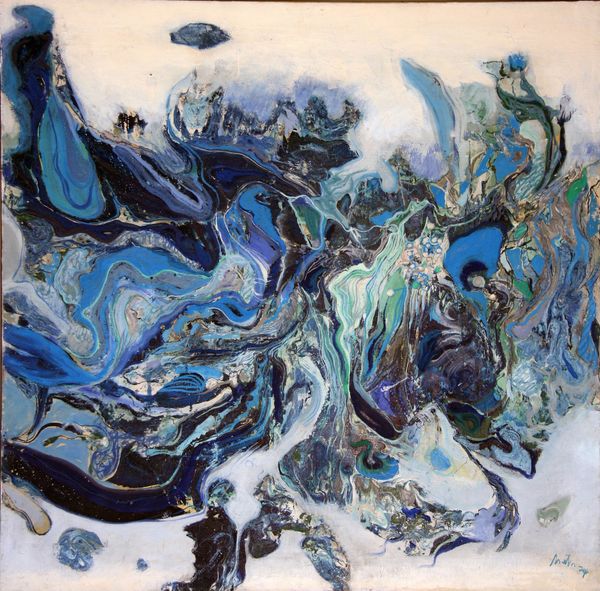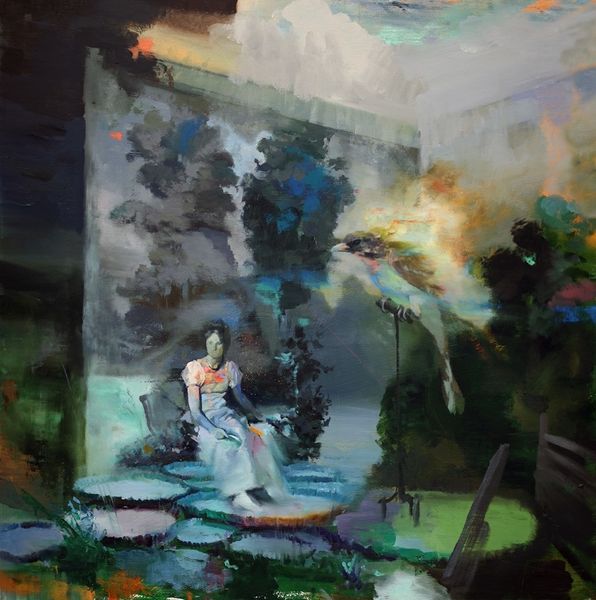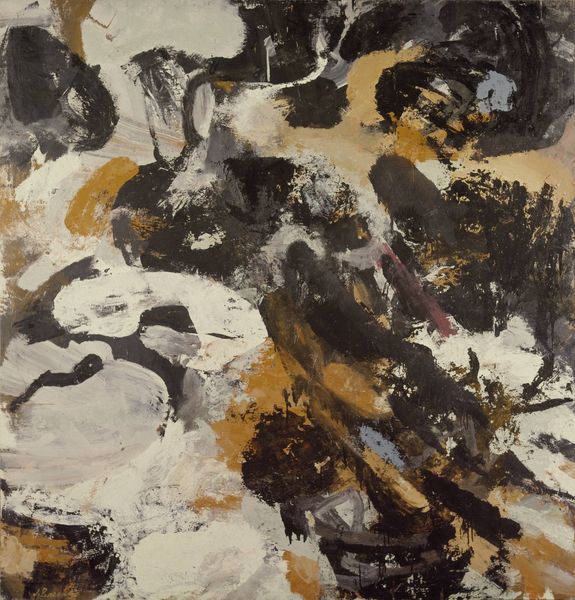
mixed-media, acrylic-paint
#
mixed-media
#
contemporary
#
organic
#
abstract painting
#
water colours
#
acrylic-paint
#
form
#
abstraction
Copyright: Darren Waterston,Fair Use
Curator: Darren Waterston’s 2012 mixed-media piece, “Locus Amoenus,” presents a rather unique approach to abstraction, doesn’t it? Editor: It’s dreamy, almost ethereal. I see cloudscapes, nebulae… It's captivating how the dark, amorphous shapes at the bottom ground the lighter, floating forms. It is somewhat evocative of Chinese landscape painting tradition. Curator: The title is definitely a good starting point here. Locus Amoenus refers to a classical, idealized landscape—a serene, sheltered place. In terms of material consideration, Waterston mixes acrylic paint and watercolors here to evoke a liminal space of the natural environment that might also extend to an imaginary landscape. I see Waterston’s fascination with layering techniques, pushing paint's liquidity. The way he uses the medium—those pools and washes—speaks to process over precision. Editor: That sense of idealized space is spot on! And those bottom shapes – look almost like darkened isles, the kind of land masses you'd see represented on medieval maps indicating places beyond, full of the unknown, of fearsome imaginings of monsters and demons lurking about. Curator: Interesting interpretation, especially when we think about classical myths placing monsters into similar settings. It strikes me that in using these acrylics and watercolours in the way he has, Waterston is consciously breaking down the old hierarchy separating 'high art' in the form of fine art and 'lower' forms of artistic and craft based expression such as illustration and map making. How can we truly divorce fine art, supposedly made for the upper classes from more quotidian or workaday expressions of image production? Editor: Precisely! The layering creates this veil-like quality; obscuring, hinting, rather than dictating what we see. And there are celestial spheres depicted, with constellations. "Locus Amoenus" it could be argued, implies the macro and micro dimensions of nature: perhaps how internal psychological landscapes also contain projections of 'outer' space in dreams. It hints at alchemical pursuits... perhaps inner transformational work is alluded to here. Curator: I agree; his playful layering blurs boundaries. Through this process he also makes comment on the increasingly thin and quite frankly, fairly meaningless lines separating artist, craftsman, designer. What else? Editor: Thinking about it now, the painting invites us to question the difference between objective, observable natural forms versus how those forms manifest as cultural symbols through our subjective, inner worlds. The artist uses archetypal forms to give viewers something oddly familiar... a world both 'of' this world, but distinctly not. It hints at somewhere sacred and fundamentally unknowable. Curator: Beautifully said. It leaves us wondering, doesn't it, about the physical labour and techniques employed and also how, psychologically, cultural memory and visual symbols shape perception? Editor: Indeed! The layering creates such a beguiling piece. A testament to his methods but also the historical symbology implied, don't you think?
Comments
No comments
Be the first to comment and join the conversation on the ultimate creative platform.
